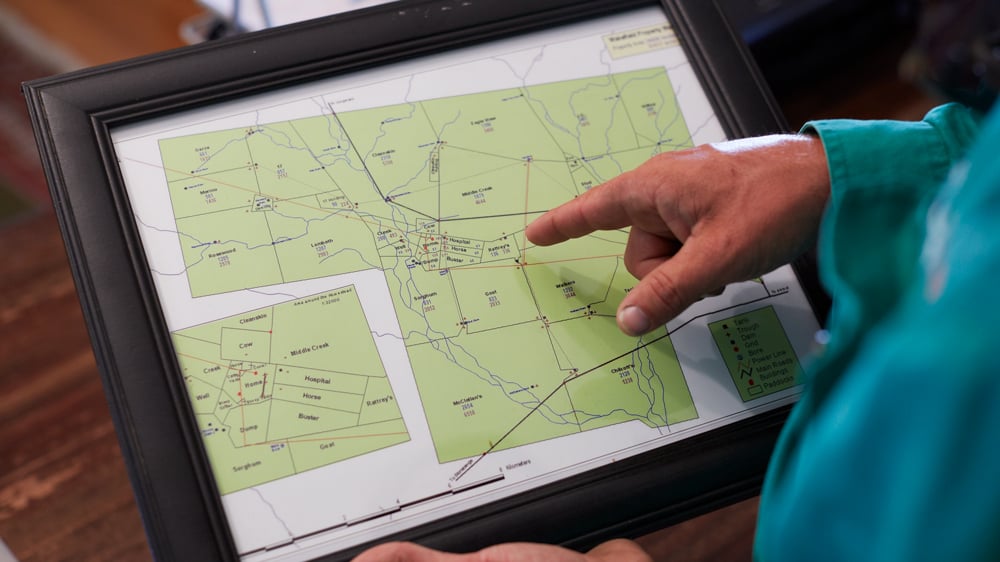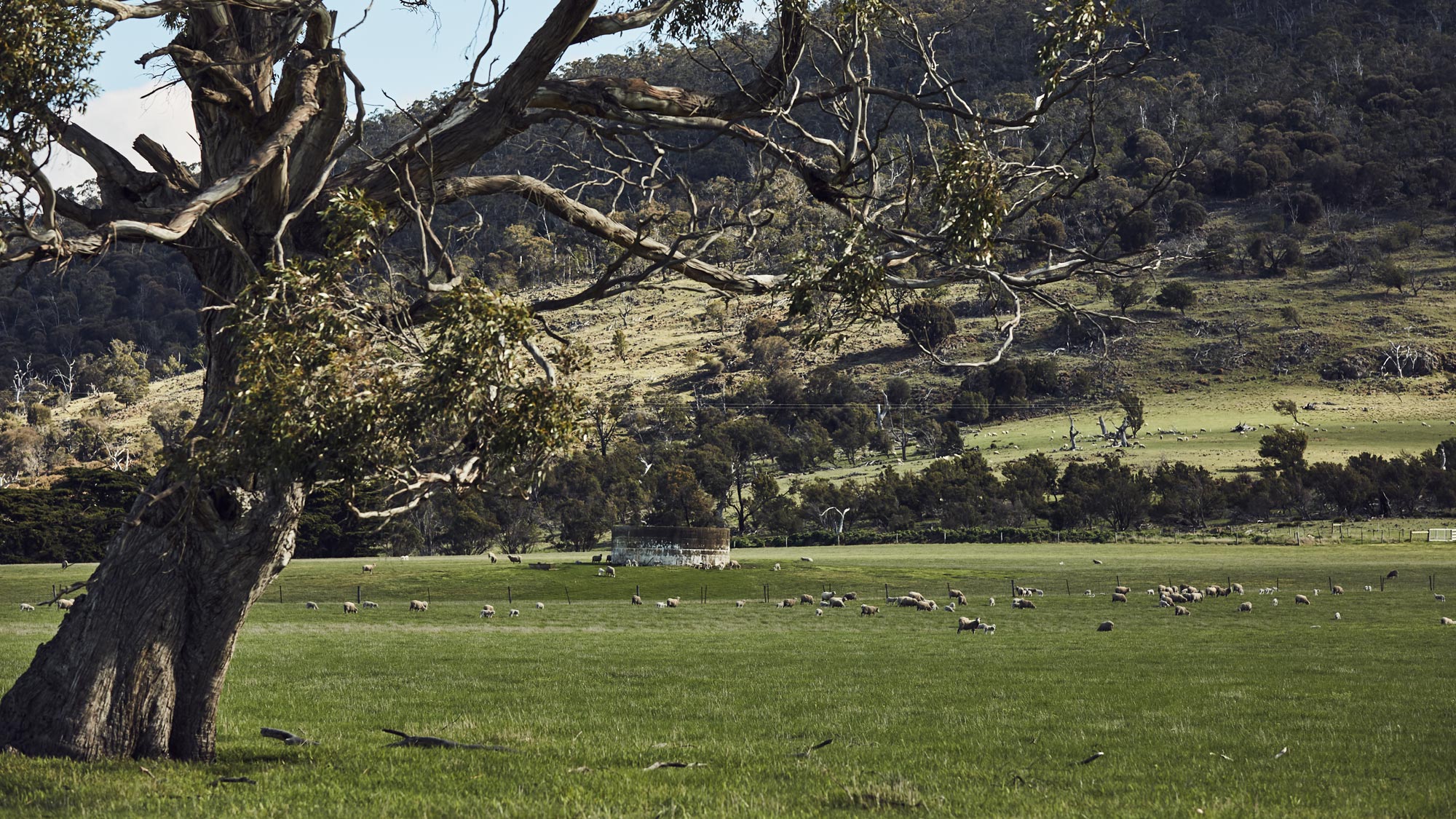Chapter 5.1 Plan the vision for your business and grazing enterprise
Chapter 5.1 Plan the vision for your business and grazing enterprise
Background information
Imagining how your grazing enterprise could look in 10 years works best if the activity includes the whole family - children are often better at imagining the future than adults. It involves developing a personal vision for your farm and how you will achieve profitable livestock and cropping enterprises within a framework of sustainability and personal satisfaction.
Before starting, it is important to recognise the very long-term nature of some of these activities, so that sometimes the next generation will see more of the benefits than you do.
Strategic planning will help you take a long-term view of your activities. Use it to also account for the personal aspirations family members may have for the enterprise into the future.
Once you have a vision, switch to operational planning to work out how to assemble the resources (time, skills, dollars, etc.) that allow you to turn it into a reality. Getting the strategic planning right with your team will save you effort and time when developing the “how to”.
At a glance
- Include the whole family and/or farm team in developing the vision for your grazing enterprise.
- Plot your vision onto a digital map or aerial photo of the farm.
- Seek multiple benefits – environmental outcomes that boost production and vice versa.
- Devise your management plan.
Where do you want your grazing enterprise to be?
Make time to develop a vision for your grazing enterprise. Without a longer-term vision, it is very difficult to know if individual, day-to-day actions on the farm are taking you closer towards or further away from your ‘ideal’ outcome. It is also very difficult to involve your family or team in achieving that vision if it’s only your vision, or the vision is only recorded in your head.
There is no ‘right way’ to develop a vision for how you want your farm to look in ten years, but if everyone is going to work towards it, then everyone needs some ownership of it.
Develop or revisit your business plan (tool 1.3 in MMFS Module 1 Plan for Success) and make sure you also capture in that plan, your team’s vision for the farm’s natural resources, including:
- Soil
- Water
- Vegetation, including native pastures and remnant vegetation
- Weeds and pests
- Native and vertebrate pests.
Several tools in MMFS Module 1 Plan for Success can make it easier for you to involve your team in the strategic planning process.
- Tool 1.4 contains a set of ‘starting questions’ to help you and/or a family or farm team imagine what the farm could look like in ten years
- Tool 1.5 is a fun technique that lets everyone who is old enough to hold a camera (or to instruct someone to hold it for them) have an equal input into the farm vision.
Document your vision and plan
As the planning progresses, it is essential to document the vision and plan to some degree. An early and simple step, and one that fits well with the strategic planning approach in tool 1.1, tool 1.2 and tool 1.3 in MMFS Module 1 Plan for Success is to work on an aerial photo or farm map. A digital farm image or laminated aerial photo of your property, and information layers or overlays, will let everyone share their vision for the farm and build on contributions from other family members. This ‘birds eye view’ will provide extra insights, such as where vegetation corridors might best be located, as well as providing a good snapshot of ‘day one’ of your ten-year plan. Revisit your plan annually to keep your plans focused and on track.

Plan for multiple benefits
Resources are scarce on every farm and must be allocated carefully. Environmental outcomes often have long lead times, making it hard to justify the inputs unless they also improve enterprise profitability. This is the concept of multiple benefits – seeking to improve environmental values in ways that boost production, and conversely, ensuring that production focused activities also deliver environmental outcomes.
Some examples of multiple benefits are:
- A fence constructed primarily to protect vegetation, can, if planned that way, increase subdivision and therefore increase grazing management and pasture utilisation options. Fencing for vegetation corridors can also provide the basis for separating different soil types which require different management or even incorporate a laneway system to facilitate stock movement.
- Fencing off a bare hill and mid slope and allowing them to revegetate may simplify your decision making, allowing more inputs (fertiliser, your time, etc.) to be applied in areas that give better returns.
- Revegetation to provide a corridor between remnants might also deliver more shade and shelter for livestock, improve water use efficiency to prevent the spread of dryland salinity, or allow for commercial opportunities such as firewood, sawlogs or wood chips.
- Remnant vegetation and other conservation areas need to be fenced off and managed primarily for their environmental value but can be a valuable part of the farm feed supply and offer shelter in bad weather.
- Dams constructed for water supply can incorporate design features (e.g. an island for water birds to safely roost) to improve biodiversity.
- Pasture cropping (oversowing winter crops into summer-active, perennial pastures without killing them) provides the benefits of a crop and enhances pastures via resting from grazing and improved year-round production of feed.
Case studies of sheep producers managing farm waterways, native vegetation and pastoral country on their properties for multiple benefits provide practical examples of managing natural assets as part of a profitable grazing enterprise (see signposts). These case studies may give you some good ideas to incorporate into your own vision for your grazing enterprise.
Firm up and resource your plans
Mark all the relevant patches and paddocks on your aerial photo or farm map with a permanent pen and mark your plans with a non-permanent marker.
Once you and your family have drafted your vision onto an aerial photo, the next step is to make sure your plan is attainable and practical. This is the switch from strategic to operational planning.
A network of regional natural resource management (NRM) authorities is responsible for investing in land management practices that achieve community and environmental benefits.
These authorities are called Local Land Services (LLS) in NSW, catchment management authorities (CMAs) in Victoria, Regional NRM councils in WA, NRM Boards in SA, NRM Regional Committees in Tasmania and Regional NRM Bodies in Queensland.
Contact your regional authority and get in touch with the Regional Agriculture Landcare Facilitator (RALF) to help assess your options and outline what support they might be able to provide. Depending on your regional NRM authority and RALF, this support might include:
- Connecting you with local Landcare groups or producer groups tackling similar issues
- Assistance with the planning
- Advice on incentive funding
- Help to complete an application for incentive funds
- Taking you to visit farms that are a few years down the track (i.e., just properly started) and 10 years down the track (to see the sort of progress that you might expect in 10 years)
- Funding assistance for protection of high value assets
- Advice with conservation covenants for current and future protection of areas with high conservation value.
SIGNPOSTS
Read
The AWI website has information and case studies relevant to sheep producers on a range of natural resource management issues, including soil, water, biodiversity and regenerative agriculture.
The MLA website contains information relevant to sheep producers regarding natural resource management.
For access to all regional natural resource management NRM authorities across Australia go to the website and click on your region.
Resources specific to NSW.
Resources specific to Victoria.
Resources specific to SA.
Resources specific to Queensland.
Resources specific to WA.
Resources specific to Tasmania.
Information for farmers considering pasture cropping for the first time, from Local Land Services NSW.






